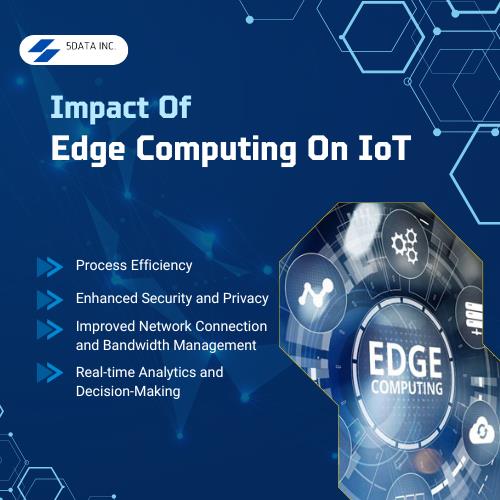What we cover in this blog
Key Takeaways
- Reduced Latency: Edge computing processes data locally, enabling real-time insights crucial for applications like autonomous vehicles and factory automation.
- Enhanced Security and Bandwidth: Local data processing reduces network congestion and enhances data privacy, improving bandwidth efficiency.
Understanding Edge Computing
Edge computing involves processing data close to where it is generated rather than relying on today’s centers, often referred to as cloud computing resources. This approach utilizes edge devices, which are physical or virtual devices that are located close to the data source, like sensors, routers, and gateways. These devices are responsible for handling local processing right at the ‘edge’ of the network. By analyzing data on-site, organizations can eliminate the delays that come with sending data to centralized servers, significantly reducing IoT latency and allowing for quicker insights.
In IoT ecosystems, where billions of devices continuously produce vast amounts of data, sending all this information to a centralized cloud for processing can cause significant delays due to network bandwidth limitations, congestion, and the “sheer” volume of data traversing the network. Edge computing tackles these challenges by processing data at the point of data generation. Here’s how edge computing reduces latency:
- Local Processing: By processing data locally on edge devices, the need for data to be sent to centralized data centers is minimized, which reduces the time taken for analysis and decision-making.
- Efficient Data Transmission: Edge computing tackles network congestion by transmitting only essential data to the cloud, reducing delays and enhancing performance. This streamlined data flow is a core feature of edge computing that significantly reduces latency.
- Improved Network Performance: With reduced network traffic, edge computing leads to better network efficiency, which further lowers latency.
- Faster Insights: Local, Instant processing of data allows organizations to gain actionable insights more quickly, which is essential for applications such as robotic cars, proactive maintenance, and factory automation.
We provide various Application Development Services aimed at helping businesses build tailored solutions that enhance efficiency and foster growth. These services include developing edge computing solutions for specific industry needs, creating IoT applications that leverage the power of edge computing, and implementing measures to safeguard data processed at the edge.
Impact Of Edge Computing On IoT
Edge computing significantly enhances the functionality and efficiency of IoT systems. Here’s how it impacts various aspects of IoT:
- Process Efficiency: Edge computing reduces latency, which is vital for applications requiring live processing. In digital cities, for instance, real-time analysis of traffic data can optimize traffic flows. At the same time, in industrial automation, quick insights from IoT devices can improve production efficiency and reduce downtime.
- Enhanced Security and Privacy: IoT systems often handle sensitive data, such as personal information in smart homes or critical infrastructure data in digital grids. Edge computing, by processing data locally, significantly reduces the amount of sensitive data transmitted over the network. This enhances security through reduced exposure and enables the easier implementation of data encryption and access control mechanisms, providing you with a strong sense of reassurance and confidence in your data security.
- Improved Network Connection and Bandwidth Management: IoT devices constantly produce large volumes of data, and sending it all to centralized cloud servers can overwhelm data capacity, causing delays and decreasing performance. Edge computing helps manage this load by processing a significant portion of the data using the edge strategy, thereby improving network connectivity and reducing bandwidth requirements.
- Real-time Analytics and Decision-Making: Edge computing allows immediate analytics to be performed on data generated by IoT devices. This helps in scenarios like driverless vehicles, where immediate decision-making can be a matter of life and death and where quick detection of equipment anomalies can prevent costly breakdowns.
As a leading Software Application Development Company, we deliver innovative solutions that empower businesses to achieve their goals, particularly in the realm of edge computing.

Key Use Cases of Edge Computing in IoT
- High-tech cities: In high-tech cities, edge computing is essential for managing and analyzing data from IoT devices such as traffic cameras, smart meters, and public transportation systems. Processing data locally enables quicker response times for traffic management, monitoring energy consumption, and enhancing public safety efforts.
- Factory Automation: In industrial environments, rapid analysis of data from IoT devices like sensors and robotic systems is crucial for optimizing production, overseeing equipment health, and enhancing overall operational effectiveness. Edge computing facilitates this fast data processing, enabling proactive maintenance and reducing downtime.
- Autonomous Vehicles: Self-driving cars generate massive amounts of data from various sensors and cameras, all of which need to be processed in real time to ensure safe and efficient operation. Edge computing plays a crucial role here, enabling robotic cars to analyze this data at the source, reducing latency, and improving decision-making speed.
- Smart Grids: Edge computing helps manage energy distribution in smart energy grids by processing data from IoT-enabled devices like smart meters and transformers. By analyzing this data locally, utilities can optimize energy distribution in real-time, improve efficiency, and reduce outages.
We are a Hybrid Cloud Development Company focused on creating flexible and scalable solutions that integrate both on-premises and cloud environments.
Conclusion
Edge computing is revolutionizing the IoT landscape by addressing the challenges of latency, network capacity, and immediate processing. Positioning computing power near the data source allows for quicker insights, greater security, and increased productivity across multiple sectors. As more organizations adopt edge computing strategies, the potential for smarter, more responsive IoT ecosystems will continue to grow, paving the way for innovations in areas like smart cities, automated vehicles, and manufacturing automation. The time to adopt edge computing is now, and the benefits are not just immediate but also substantial, sparking excitement for the future of IoT.
Frequently Asked Questions (FAQs)
1. How does edge computing improve IoT security?
Edge computing enhances IoT security by keeping data closer to the source, reducing the amount of data transmitted over networks, and allowing for the implementation of localized security protocols such as encryption and permission control.
2. What is the difference between cloud computing and edge computing in IoT?
Cloud computing centralizes data processing in remote data centers, whereas edge computing processes data closer to the source. This reduces latency and data traffic congestion while enabling real-time data analytics.
3. How does edge computing enhance operational efficiency in industrial IoT applications?
Edge computing enables real-time monitoring of equipment and processes, supporting proactive maintenance, reducing downtime, and boosting productivity in the industrial settings.

Rasmita Patro
Author
